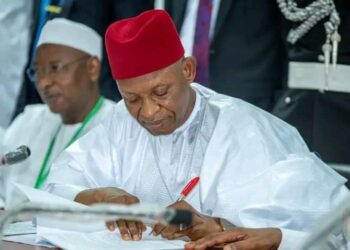The National Irrigation Development Plan 2016 to 2030 has revealed that the federal government needs about N1.5 trillion to develop 500,000 hectares of irrigated land by 2030.
Out of that figure, 96,000 hectares have been developed in the period under review.
This was revealed by the former Coordinating Director, NIWRMC, Engr. R. A.K Jimoh, during the recent Nigeria Media Water Week Event in Abuja. According to him, the Plan will require active involvement of the State governments and the Private Sector, as well as international donor agencies, to boost up the figure.
Jimoh said private sector and state governments are expected to provide additional 1,000,000 Ha of developed irrigation land and infrastructure by 2030.
“Currently there is a total reservoir capacity of about 34.5 billion cubic meters of water in Nigeria’s dams capable of irrigating more than 500,000 Ha and for other uses. However, only about 130,000 Ha have been developed under formal public irrigation by 2019 of which only 88,950 Ha are actually being irrigated, (as at 2020) with completion of additional 7 Nos Irrigation Schemes.
He said, under the Plan, Nigeria government is expected to develop 100,000 Ha of irrigation land from 2016 to 2020 as phase one, while phase two will see 170,000 hectares of irrigation land developed from 2021 to 2025 and 225,000 hectares of irrigation land will be developed in the third phase.
“Major achievements in the irrigation and drainage sub-sector 2015-2021includes, approval of the National Irrigation and Drainage Policy and Strategy by FEC in 2016. National Water Resources Policy (including Irrigation and Drainage component) was approved by FEC in 2016.
“
The Compendium and the Digital Map of Irrigation Projects in Nigeria were launched by the Hon. Minister of Water Resources on 17th August, 2021, in Abuja and copies were distributed among key stakeholders. The next stage of the initiative is to migrate to a web-based application for a more robust data and information necessary for key investment decision and general consumption.
“Total data acquired for the six (6) Geopolitical Zones of the country covers 323 irrigation schemes. While 7 Nos Irrigation Schemes were completed between 2015 and 2020, bringing actual area under irrigation to 88,850 hectares (Mamu Awka Drainage, Azare Jere, Sabke Gari, Shagari, Gender / Women Participation in Irrigated Agriculture and Middle Rima Valley Irrigation Projects).
“55,000 hectares of Irrigation land were leased out to commercial farmers under a Public Private Partnership (PPP) arrangement, Development of “Championing Women Empowerment through their participation in Irrigated Agriculture” Program. This was completed in Bokwairi and Adare in Borno and Sokoto States respectively (10Ha).
“Feasibility Studies and Designs of selected Irrigation projects have been completed. Transforming Irrigation Management In Nigeria (TRIMING). This is a World Bank supported Programme aimed at improving irrigation management in Nigeria. It comprises Rehabilitation / Expansion of about 42,000 Ha of Irrigation land under 1st Phase, expected to be completed by 2022. Irrigation Projects involved are: Bakalori-13,500 Ha, Kano, River-14,400 Ha and HVIP -6000 Ha, Middle – Rima and Dadin Kowa among others,” he said.
He also drawback to implementation of the Irrigation and Drainage sub-sector include, insufficient mobilization of
resources for Operation and Maintenance of irrigation schemes, low level of Participatory Irrigation Management (PIM) – involvement of beneficiary farming communities; public irrigation schemes are usually developed in phases commencing with construction of the dams but the downstream irrigation facilities are often left undeveloped.
He also raised concern over low private sector involvement, and the need to seek increased funding from International Donor Agencies for Irrigation Development and Management.




